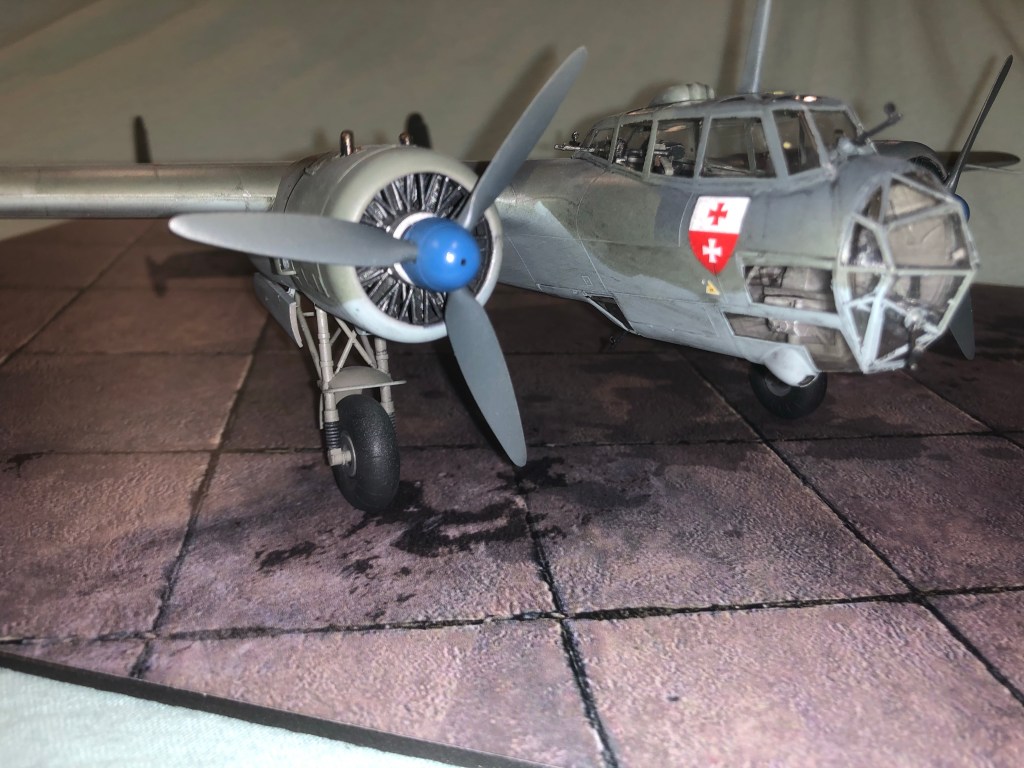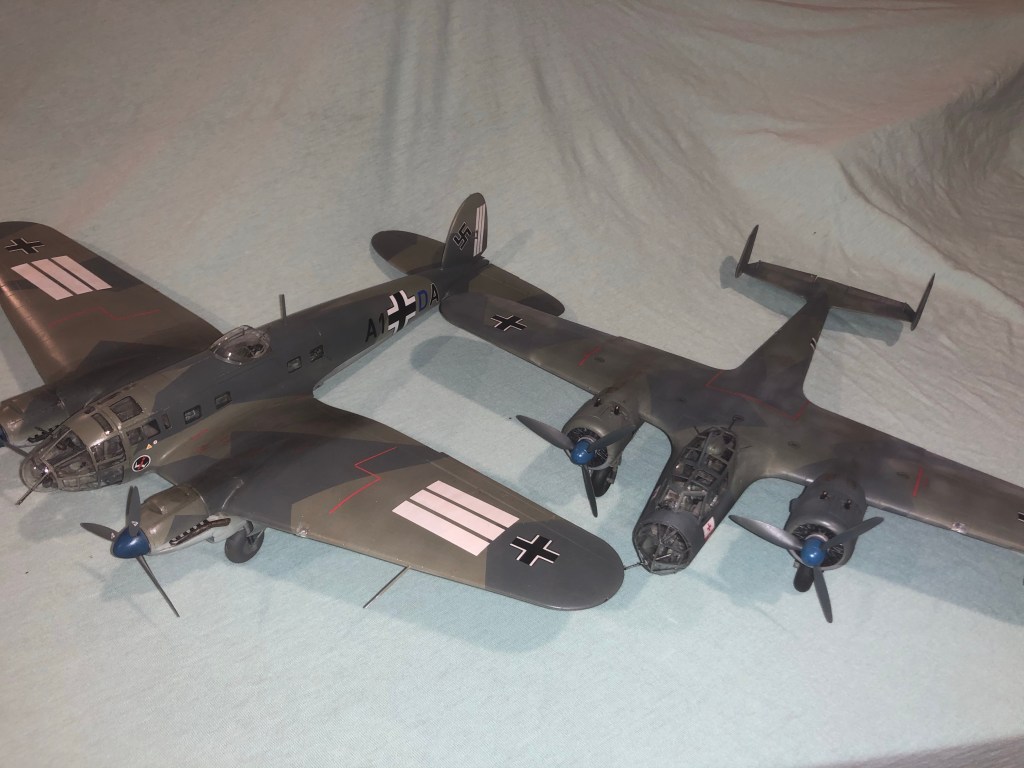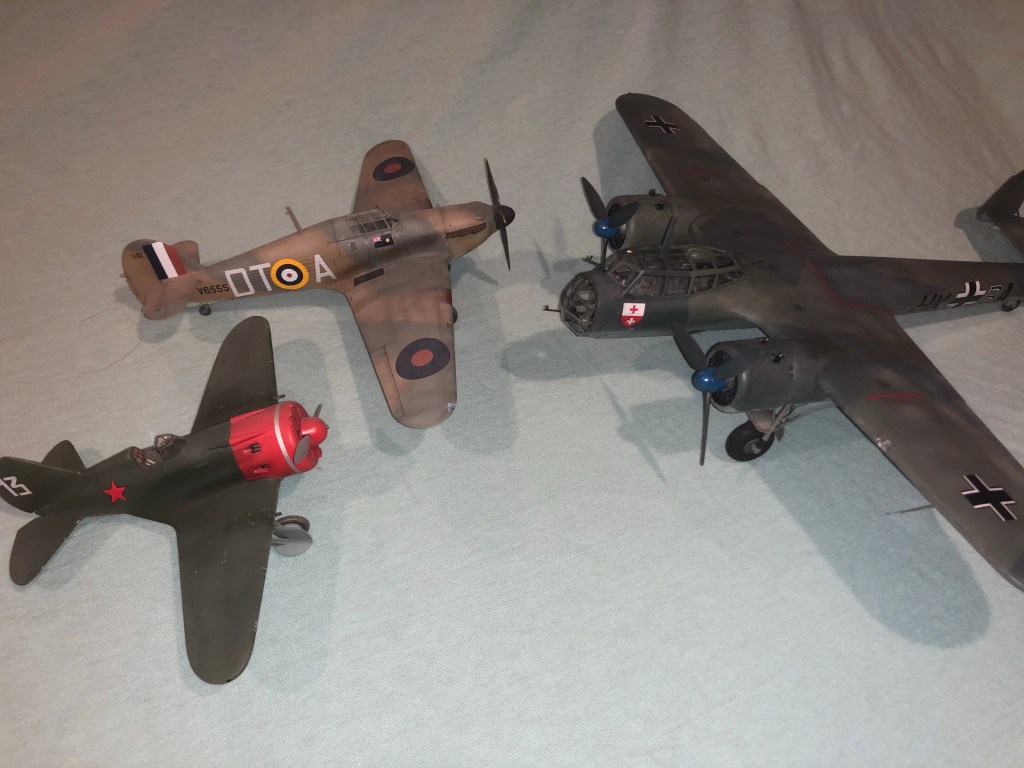One of the main bomber types in service with the Luftwaffe at the start of World War II, the Do 17 was a key part of those early operations.

Let’s take a look at a familiar and important type.
Like many German types the Do 17 started as a “high speed mail plane” for Lufthansa. The design work started in 1932, before Germany was ready to openly break with the Treaty of Versailles. In this case there may have been some truth to the story, it was apparently rejected by Lufthansa because of its lack of useable space and head room. The first three prototypes were hangered and unused for six months in 1935.
But then, a Lufthansa test pilot, who was looking for more military grade hardware, test flew one of those planes and was thrilled with its handling and range of full aerobatics. The next prototype added the twin tail for lateral stability and deleted passenger windows; a bomber was born.


Ultimately the Do 17 and its derivatives were produced in a staggering number of versions, that included bombers, recon and night fighters. The first models, “E” through “U” used the Daimler-Benz Db 600 engine and had a very slim forward fuselage. Experience in the Spanish Civil War led to a major redesign for the Do 17Z. The crew compartment was redesigned and enlarged; this put the pilot higher for better visibility and increased defensive guns to six. The Db 600 engine was no longer available; and its replacement, the Db 601, was reserved for fighters. So Dornier switched to the less powerful Bramo 323 radial. No surprise initial “Z”s (Z-0 and Z-1) were underpowered and bomb load dropped to 1100 lbs. Work with Bramo led to a much improved 1000 hp engine for the Z-2 and bomb load was restored to 2200 lbs.


When World War II started the Do 17 was the most numerous tactical bomber in Luftwaffe service. But it was clearly a light bomber and older. From the start more groups where equipping with the He 111 and its heavier load and soon, the Ju 88 with its much higher performance.
The Do 17 remained in service, in secondary functions after 1941, to the end of the War. An export version was tagged Do 215, was essentially similar except somehow Dornier acquired Db 601 engines for it. In the event, most Do 215s were retained for Luftwaffe service and used in mostly the same roles as the Do 17. Dornier also designed a much enlarged Do 217, which looked similar to the Do 17 but used Jumo 211 engines; it was classified as a heavy bomber.



This particular aircraft was used by the headquarters flight of KG 3 during the epic Summer of 1940. It is shown as it appeared during the Battle of France. It is from the ICM kit with Superscale and kit decals. I’m coming to really appreciate ICM kits. Fit and detail are outstanding. They get a little fiddly with WAY too much detail on the engines and bomb bay. Its like getting a super detail set along with the basic kit. But who knows, one day I may decide to build one more opened up. At least the bomb bay. And the basic kit is just gorgeous.
It really struck me how open the interior is. There’s no floor or structural bulkheads. Seats, guns, other equipment are just bolted to the structure and often left hanging in space. In short, it looks like a 1930s design in that transition from early to modern features.




well against any sort of fighter opposition.

And I have bought one earlier in my binge buying on Amazon, and reading this Dave, I don’t regret it for a millisecond.
Thanks for the review.
It really builds up into a beauty!
I don’t regret my shopping spree at all. Now prices are higher than they were earlier. I just hope to live longer.
Its good to have motivation.
Reblogged this on My Forgotten Hobby III and commented:
Part of my precious collection of unbuilt model airplane kits
It was nicknamed “The Flying Pencil” and you can see why. I wonder if the Germans called it
“der fliegende Bleistift” ? (thank you, Google)
My guess would be yes. Or something like that!
I’m building it now on My Forgotten Hobby VI.
Definitely another “iconic” sort of aircraft. I can’t look at it without thinking “Battle of Britain”.
I have the DVD of the movie Battle of Britain… A classic.
I do too! Absolutely a classic.
Pingback: ICM Ju 88A-14 – Intermission: Do 17Z-2 Progress Report – My Forgotten Hobby VI